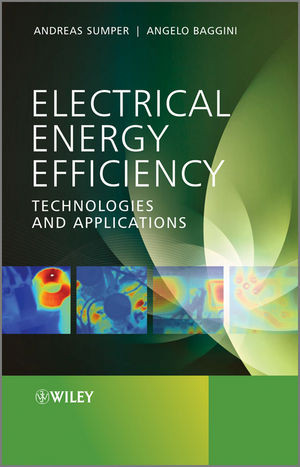

Most ebook files are in PDF format, so you can easily read them using various software such as Foxit Reader or directly on the Google Chrome browser.
Some ebook files are released by publishers in other formats such as .awz, .mobi, .epub, .fb2, etc. You may need to install specific software to read these formats on mobile/PC, such as Calibre.
Please read the tutorial at this link: https://ebookbell.com/faq
We offer FREE conversion to the popular formats you request; however, this may take some time. Therefore, right after payment, please email us, and we will try to provide the service as quickly as possible.
For some exceptional file formats or broken links (if any), please refrain from opening any disputes. Instead, email us first, and we will try to assist within a maximum of 6 hours.
EbookBell Team

4.1
60 reviewsNow a major topic in industry and the electrical engineering research community, engineers have started to focus on analysis, diagnosis and possible solutions. Owing to the complexity and cross-disciplinary nature of electrical energy efficiency issues, the optimal solution is often multi-faceted with a critical solutions evaluation component to ensure cost effectiveness.
This single-source reference brings a practical focus to the subject of electrical energy efficiency, providing detailed theory and practical applications to enable engineers to find solutions for electroefficiency problems. It presents power supplier as well as electricity user perspectives and promotes routine implementation of good engineering practice.
Key features include:
With invaluable practical advice, this book is suited to practicing electrical engineers, design engineers, installation designers, M&E designers, and economic engineers. It equips maintenance and energy managers, planners, and infrastructure managers with the necessary knowledge to properly evaluate the wealth of electrical energy efficiency solutions for large investments. This reference also provides interesting reading material for energy researchers, policy makers, consultants, postgraduate engineering students and final year undergraduate engineering students.Content:
Chapter 1 Overview of Standardization of Energy Efficiency (pages 1–8): Franco Bua and Angelo Baggini
Chapter 2 Cables and Lines (pages 9–19): Paola Pezzini and Andreas Sumper
Chapter 3 Power Transformers (pages 21–69): Roman Targosz, Stefan Fassbinder and Angelo Baggini
Chapter 4 Building Automation, Control and Management Systems (pages 71–124): Angelo Baggini and Annalisa Marra
Chapter 5 Power Quality Phenomena and Indicators (pages 125–163): Andrei Cziker, Zbigniew Hanzelka and Ireana Wasiak
Chapter 6 On Site Generation and Microgrids (pages 165–188): Irena Wasiak and Zbigniew Hanzelka
Chapter 7 Electric Motors (pages 189–228): Joris Lemmens and Wim Deprez
Chapter 8 Lighting (pages 229–262): Mircea Chindris and Antoni Sudria?Andreu
Chapter 9 Electrical Drives and Power Electronics (pages 263–293): Daniel Montesinos?Miracle, Joan Bergas?Jane and Edris Pouresmaeil
Chapter 10 Industrial Heating Processes (pages 295–334): Mircea Chindris and Andreas Sumper
Chapter 11 Heat, Ventilation and Air Conditioning (HVAC) (pages 335–355): Roberto Villafafila?Robles and Jaume Salom
Chapter 12 Data Centres (pages 357–370): Angelo Baggini and Franco Bua
Chapter 13 Reactive Power Compensation (pages 371–398): Zbigniew Hanzelka, Waldemar Szpyra, Andrei Cziker and Krzysztof Piatek